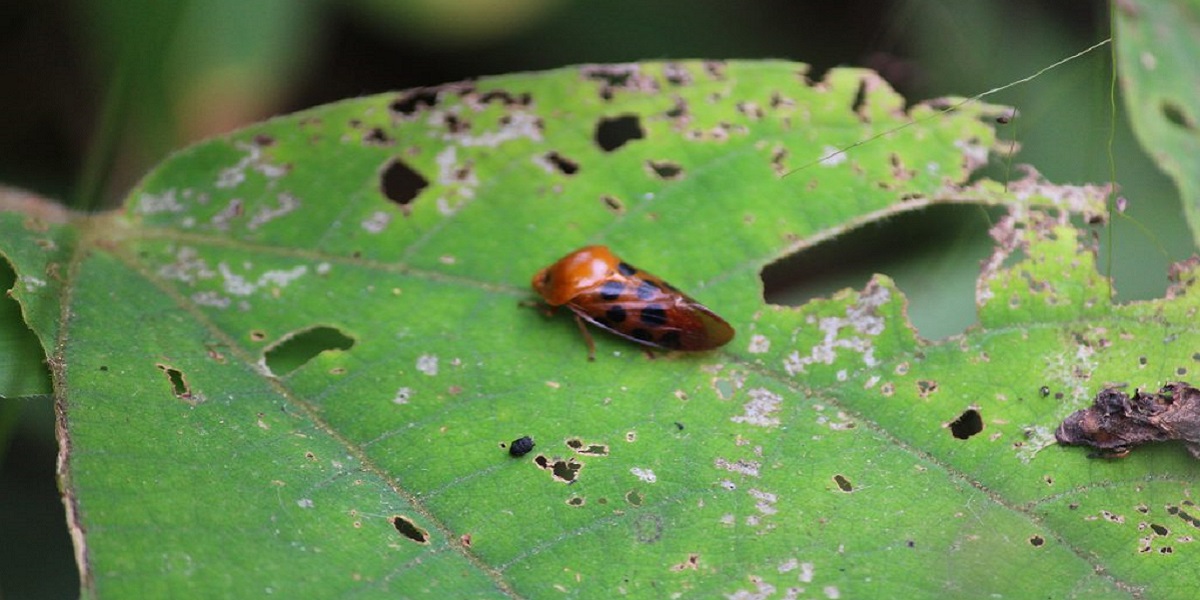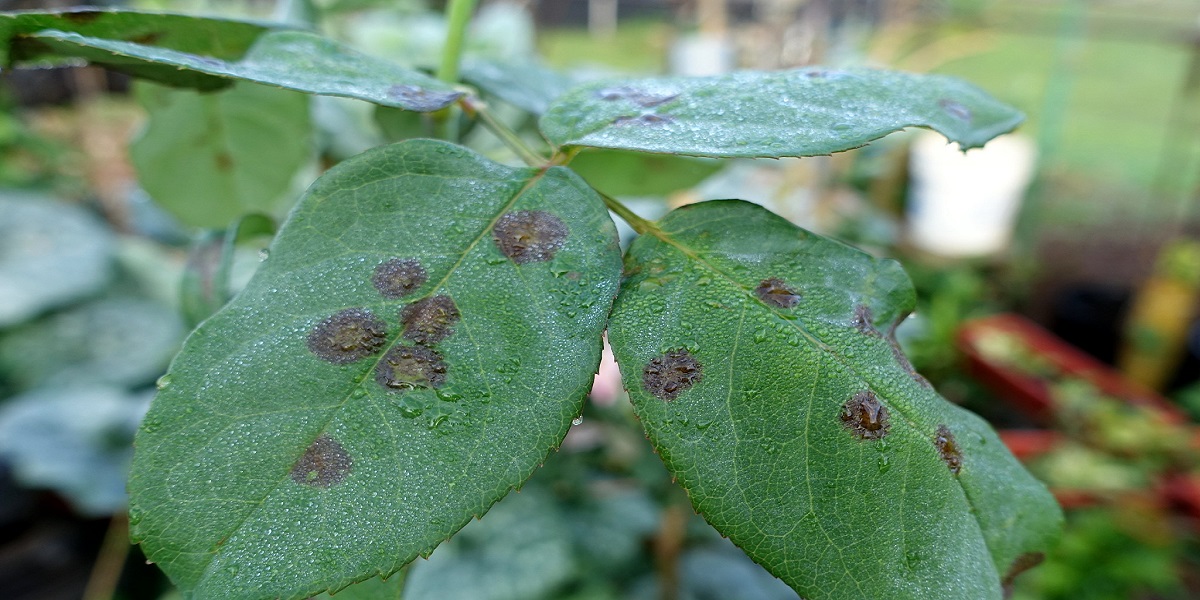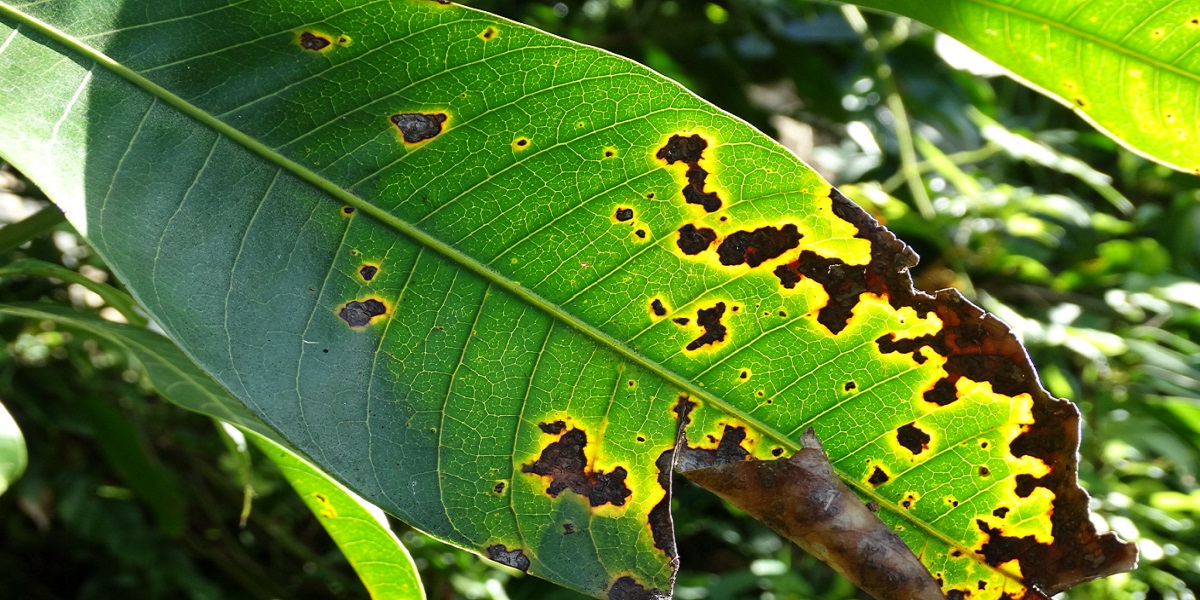Black spot is usually considered a rose disease. Meanwhile, it can quickly spread to any plant in your house. It is highly important to notice the problem on time, identify it, and develop the best strategy for treatment. Read this article to find out everything you need to know about the black spot and whether they can affect your flowers. You will find here the most reliable ways to treat the ill plant.
What Is Black Spot?
Black spot leaf disease is a disorder that happens with plants on a physiological level. It is caused by a deficiency of potassium. The chlorophyll’s level is getting down once the illness progresses. It starts with small black spots on the leaves that spread wider till the plant dies.

Black spot disease is also known as a black leaf. It can be caused by bacteria or fungi, based on its type. The major types of fungi and bacteria that can cause the disease:
- Pseudomonas bacteria. It lives as a parasite or saprophyte on the surface of the plant and inside the tissue. It suppresses a wide range of microorganisms inside the plant and lowers down plant’s growth. Since it is bacteria, you can only use bactericides to treat the black spot caused by it;
- Diplotheca fungus belongs to the Myriangiaceae family. It is widespread fungi in cacti and succulent plants. It spreads the dark spores inside the plant’s cells. The most common area of spreading is Texas and Florida. The fungi are rare in the North;
- Asterina fungus. Asterina is a wide fungi genus within its own family. The genus was found in 1845. There are numerous species of fungi that dwell in different plants. Usually, it is known as the black mildew fungi. It affects leaves and spreads quickly to the stem. It can cause black spots on hoya;
- Glomerella fungal pathogen is a well-known problem for gardeners around the world. It does not only cause the blackening of the leaves but also starts the fruit rotting. If black spots on houseplants were caused by this fungi, you have to immediately isolate it from others;
- Asterinella fungus belongs to the Microthyriaceae family. You may notice it on the already dead plants or decaying. Usually, this fungus does not cause the death of the plant. Instead, it prefers to spread around the diseased one;
- Gnomonia fungus belongs to Gnomoniaceae family. There are over 60 species of the genus. You can find this fungus on flowers, trees, and even strawberries. It prefers fruit trees like cherries. Its favorite time of the year is the beginning of summer when leaves are juicy and green. Once it affects leaves, they can stay attached to the stem for the whole year;
- Placosphaeria fungus is not widely spread around the states. It can be found in the North and central part of the US. It is well known for causing black spots on plane trees. It causes anthracnose in trees;
- Stigmea fungus is a genus in the Ascomycota division. It is still not completely studied. This fungus is rare in the US. Meanwhile, it is widely spread on trees in Europe and Asia.
Symptoms and Diagnostics
Once you have noticed tiny black spots on leaves you have to act immediately. If you are not sure whether it is a black spot disease, root rot, or something else entirely, it is better to use a specific app that recognizes the disease by the photo you download. Infection can occur on house plants, outdoor plants, trees, and bushes.

Check out the most popular plants affected by disease and how to recognize it:
- Black spots on succulents are highly popular problems. While succulents don’t require too much care, the main cause of the disease is the fungi that appear from hot temperatures and overwatering. You may save your plant if you notice the disease in the early stages. Succulents such as Pachyverias, Graptopetalums, Echeverias, Graptoverias, and Pachyphytums suffer from fungi more frequently. If you notice black spots on jade plant, you can diagnose the fungal cause of the problem;
- Black spots on cactus can be caused by bacteria, fungi, or pests. You can also mistake disease with the root rot caused by overwatering. If your cactus has lead spot disease you will see black circles on the pads cacti. The first thing you have to do is to isolate it from other plants and remove parts that were infected;
- Black spots on pothos leaves are caused by overwatering and fungus spread. If your plant was infected by fungi you have to use fungicidal spray. The best way to find out the cause is to send your photos to the app and read the experts’ advice;
- Black spots on hibiscus leaves may come from two different problems: the pest infestation of fungus. The fungus spread on the leaves when the plant is overwatered for a long period of time. Usually, it spread during the winter period, when it is cold inside the house;
- Black spots on mint leaves are caused by fungal spores. It quickly spreads on the leaves. After that, they just fall off. The plant can even die without proper treatment. It can quickly transmit from one plant to another;
- Black spots on sunflower leaves are caused by the fungi that live inside the soil. It travels from the roots to the leaves. The first thing you notice is brownish spots on stems and leaves. Although it is not an indoor plant, you still have to be familiar with possible threats;
- Black spots on camellia leaves don’t appear frequently. Yet, once it appears, you have to understand that it is a fungal disease. The most popular problem is sooty mold. It affects the tissue of the plant. This disease affects the natural photosynthesis process;
- Black spots on grass usually occur due to the fungi. Some of the grass types are resistant to black spots, but not all. Spots are visible on all the lawns. You need to treat it with fungicide immediately. If the area is not big, you have to dig the infected grass immediately;
- Black spots on peony leaves are usually caused by Phytophthora cactorum pathogen. It consumes leaves and even buds. You will notice the black and leather-like spots on green leaves. It can migrate to the stem;
- Black spots on rhododendron leaves can be caused by different factors. The most popular is fungal. The disease starts with the brown spots on leaves and continues to grow. It does have yellowish rings and is recognizable from other diseases. You need to make sure you separated this plant from others;
- Black spots on azalea leaves can be caused by pests. You will notice them if you pay close attention. The fungal disease appears usually during the fall. It spreads quickly around other plants. This disease cycle ends when it kills the leaves;
- Black spots on peace lily. This plant does not suffer often from fungal diseases. Yet, when the moisture level is too high you may expect to see dark brown and black spots on it. When the leaves are wet, fungus thrives;
- Black spots on hoya leaves appear on the tips of leaves. There can also be free or yellowish spots. The black spots are simple to recognize among other types of diseases. It means that the soil is contaminated;
- Black spots on magnolia leaves are also known as Phyllosticta leaf spot disease, caused by Phyllosticta fungus. It is represented by small black spots on leaves. There may be black spots on plant stems. During the time these spots increase as the illness progresses;
- Black spots on ficus leaves are the best signs that the disease infected the whole plant. They are dark and round. Usually, they are visible on top of the leaf. Once the disease progresses, the dark spot may be encircled by a yellow ring;
- Black spots on holly leaves are also known as tar spots. This is a fungal disease that usually affects leaves. It results in severe infestation and the loss of infected parts. This disease is incredibly popular on American holly houseplant, as well as holly bush;
- Black spots on palm leaves are highly popular among different types of palms. You may notice the black spots on palm stems and leaves before the fungus spreads further and damages the plant;
- Black spots on plumeria leaves are caused by frangipani rust, sooty mold, and black fungus. Sometimes this disease can be mistaken for a pest infestation. However, once the disease progresses, you can differ one from another;
- Black spots on black-eyed Susan leaves are a common disease. Every year it affects an enormous amount of the Rudbeckia population. The fungal disease that infects leaves and creates black spots is called Septoria leaf. It is also a well-known problem of tomatoes and it requires immediate treatment;
- Black spots on pilea appear after the plant does not receive enough sun or is being overwatered. You can cure the disease by cutting the damaged leaves and providing advanced treatment, including dry soil, sunshine, and a drainage system;
- Black spots on rubber plant leaves appear after they were attacked by harmful bacteria. Usually, the main reason is overwatering. Black spots are getting encircled by yellow ones. You have to make sure that the plant is not suffering from the root rot before you start the treatment;
- Black spots on yucca leaves appear in humid areas usually. If you overwater the plant, it will occasionally develop fungal spores. Transmission of the disease is quick and you have to separate the plant from healthy ones;
- Black spots on the Chinese money plant appear once the plant is overwatered. Pileas are extremely vulnerable when it comes to overwatering. You have to make sure that there is a drain system inside and the soil receives enough water, not more, so black spots on money plant leaves would not spread further;
- Black spots on fern leaves are less visible the first time. They appear on the underside of the leaf. You don’t have to do anything if you see them. These black spots are the places for spores;
- Black spots on ivy leaves are symptoms of bacterial disease. They can be black, dark brown, or yellowish. You have to cut down the infected leaves so you could save the healthy ones;
- Black spots on gardenia leaves are caused by Scooty mold. This is the fungal infection that usually appears during summer and early autumn. It is caused by white flies that attack the plant and transmit the fungi;
- Black spots on eucalyptus leaves are usually called Anthracnose. The younger species are more vulnerable to the problem. Leaves are covered by black spots and begin to curl once the disease spreads. It affects leaves, twigs, and branches;
- Black spots on dracaena leaves can’t be a totally avoided problem if you do not overwater the plant. The soil must begin to dry before you water it again. The black spots appear on the tips of the leaves;
- Black spots on tulsi leaves are caused by bacteria named Pseudomonas. This is a rare disease for tulsi or basil. The symptoms may start with stems and climb up to the leaves.
Methods of Treatment
Once the black spot appears on the leaves of your favorite plant, you can take control of the disease.

After you identify the illness properly with the help of the app, you can choose the treatment. Here is what you can do:
- Prevent disease. Preventive measures usually include a strict schedule of watering, enough sunlight for the flower during the day, and a good drainage system. Follow these simple rules and you will not have to deal with black spots;
- Cut all the infected leaves. No matter of plant’s classification, you may need to start with cutting down the leaves and moving the infected plant aside from others;
- Natural treatment. Before you apply fungicide, you can try natural remedies like neem oil. It is simple to use and does not contain chemicals. Apply it to the leaves. If you want to simplify the process, you can mix 1 tablespoon of baking soda in 1 gallon of water and spray it on the leaves and stems;
- Fungicide. The best way to take fungi under your total control is to use a specifically designed fungicide. You still need to make sure that the disease was caused by fungus.
Plant’s Life Without Black Spot
The best way to avoid black spot problems on your plants is to take care of them properly. Usually, a black spot appears due to overwatering and in the high humidity area. You have to make sure that your plant receives enough sun, and enough water, and grows in the normal humidity. Use the knowledge you find out in the article to improve your
Leave a Reply
You must be logged in to post a comment.